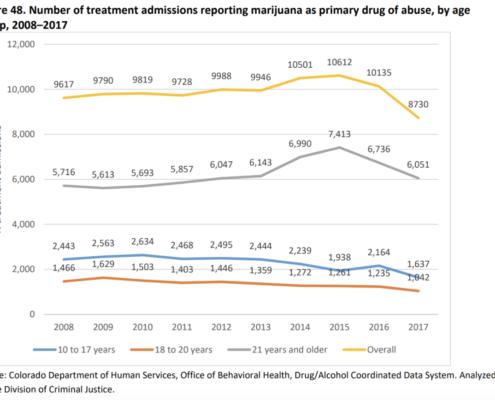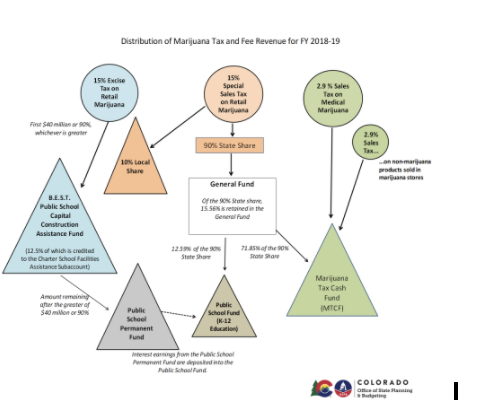The Cost Of Drugs
The overall costs from drug abuse in the United States total out to staggering and shocking amounts. It is estimated by the National Institute on Drug Abuse that the yearly cost of drug abuse exceeds $740 billion (2020). The following table summarizes the yearly costs associated with the use and abuse of various drugs in the United States.
| Drug | Lost Productivity Cost Per Year | Healthcare Cost Per Year | Criminal Justice Cost Per Year | Total Cost Per Year |
|---|---|---|---|---|
| Overall Drugs in the United States | $120 Billion
(NDIC, 2011) | $11 Billion
(NDIC, 2011) | $61 Billion
(NDIC, 2011) | $740 Billion
(NIDA, 2020) |
| Opiods | $11.6 Billion
(American Addiction Center, 2016) | $28.9 Billion
(Florence et al., 2016) | $5.1 Billion
(Birnbaum et al., 2011) | $696 Billion
(CEA, 2019) |
| Cocaine | $10.93 Billion per year (Gans MD, 2020) | $133.2 Billion (Gans MD, 2020) | $44.8 Billion (Gans MD, 2020) | $193 Billion (NIDA, 2020) |
| Methamphetamines | $0.81 to $1.62 Billion per year (Gans MD, 2020) | $33.3 Billion (Gans MD, 2020) | $11.2 Billion (Gans MD, 2020) | $48.3 Billion [estimate for 2019] (American Addiction Center, 2020) |
Note
It should be noted that the costs in the chart often come from different years. Therefore, this chart may not have complete up to date numbers. The purpose of this chart is to show the incredible cost associated with drug abuse in the United States.
The sources for this chart are in the bibliography at the end of this page
Total Cost of Drug Abuse in the United States
The costs associated with use and abuse of drugs can be divided into many categories. Here I have outlined just some of the costs that are associated. Drug use and abuse leads to lost productivity (“How Illicit Drug Use Affects Business and the Economy,” 2007). According to the National Drug Intelligence Center (NDIC) the loss of productivity comes from those unable to be in the workforce due to reasons like, treatment participation, death, incarceration, illness, and other outcomes from drug use (2011). The NDIC estimates that lost productivity costs the United States over $120 billion per year. In addition, it is estimated that the healthcare costs resulting from drug abuse total $11 billion annually (NDIC). Healthcare costs can include anything from treatment programs to emergency care for an overdose. The use and abuse of drugs can also contribute to crime (NDIC). Criminal justice costs are estimated to total around $61 billion dollars annually (NDIC). In addition to costs associated with crimes committed on U.S. soil, the predicted cost also includes costs associated with interdiction (NDIC). It is evident that drug use uses up an immense amount of economic resources each year.
Opioids
Opioid use has been on the rise for over a decade and has led to an increase in the number of overdoses (fatal and non-fatal) in this same time period (“Understanding the Epidemic,” n.d.). It is estimated that in 2003 the health care costs associated with opioid abuse was $28.9 billion (Florence et al., 2016). The Council of Economic Advisors estimates the cost of fatalities related to opioid use in 2015 to range from $222.1 billion to $549.8 billion dollars (CEA, 2017). The Council estimated the cost of non-fatal opioid use to be around $72.7 billion dollars in 2015. The United States Council of Economic Advisors not only takes into account the costs from prescription abuse, but costs from illicit use as well. From 2015 to 2019 the Opioid Crisis has cost about $2.5 trillion dollars (White House Council of Economic Advisers, 2019)! While street heroin overdoses are going down, prescription opioids are rapidly increasing to where 45.8% of people in the US took some opioid prescription pills in the last 30 days in 2016. This huge over perception caused an overwhelming number of people addicted to these pain meds which is why overdose rates have skyrocketed since the 90’s. This crisis is causing a huge economic disaster and the government has estimated a loss of 3.4% of GPD in the last 4 years. Trump is trying to deal with the opioid crisis and according to the White House Council of Economic Advisers, the CEA estimates that 30,000 lives were saved from 2017-2019 if the opioid crisis kept increasing at the same rate as it was in 2016. This means that the CEA believes that from 2017 to 2019 the opioid crisis would have cost $326 billion higher than the estimated cost if the opioid crisis was left untreated. The opioid crisis is still increasing, but the rate is slowing decline, but that does not mean we can stop focusing on this huge economical problem.
Cocaine and Methamphetamine
Cocaine and Methamphetamines cause $193 billion (Gans MD, 2020) in a total loss in the nation’s economy including medical costs, criminal justice costs, divorce and loss of work productivity, and all factors that reduce America’s economic value. The costs also include the cost of spreading HIV and AIDS through these drugs. This is why it has become a huge problem of today coining the term “The War on Drugs”. In fact, 54% of people in jail/prison are in due to crack/cocaine and 24% are in due to Methamphetamines (Bureau of Justice Statistics, 2015). The healthcare system is also filled with people overdosing on these illicit drugs that overall cost about $166.5 million in total per year (Gans MD, 2020). These extremely high costs could be due to the fact that there are no sufficient rehab places and many people are sent straight to jail where they never cure their addiction. This is why America has a huge drug problem and the largest prison system in the world. We are not helping the addicts, but instead sending them away. We are hiding our problems and not dealing with them which is costing us billions of dollars.
Uncertainties with Legalization
There are many people who want to legalize all drugs due to these high costs and instead use the money for treatment. A lot of people believe that if the government regulated drugs, people would be taking pure drugs rather than drugs cut with something else and the government would be making a lot more income. The problem is that we as a society do not for sure know the outcome of legalizing all drugs. There seems like there would be fewer people in jail for drug crimes, but there could be more crimes like robbery and murder because more people would be on drugs. Legalizing all drugs could also change the way drugs are viewed as a society. With a dramatic change in the stigma of drugs, more people may be willing to try drugs which would cause more people to be addicted. Being addicted to a drug or drugs makes people do unexpected things so there is no real way of knowing what exactly would happen if all drugs were legal. There could be fewer people dying over drug overdose because there would be more medical research and there would be less excitement for using drugs. We have to take into account that the numbers and information provided does not prove any which way for legalization, but shines a light on a huge drug problem that America has. There are many different ways people are trying to think of how to save money and get more treatment for those who need it, but is the legalization of all drugs the answer? There still needs to be more case studies of other countries around the world and more research on the effects before anything can change.
Bibliography
Birnbaum, H., White, A., Schiller, M., Waldman, T., Cleveland, J., & Roland, C. (2011). Societal Costs of Prescription Opioid Abuse, Dependence, and Misuse in the United States. Retrieved from https://www.researchgate.net/publication/50362628_Societal_Costs_of_Prescription_Opioid_Abuse_Dependence_and_Misuse_in_the_United_States
The Council of Economic Advisers. (2017). The underestimated cost of the opioid crisis. Retrieved from https://www.whitehouse.gov/sites/whitehouse.gov/files/images/The%20Underestimated%20Cost%20of%20the%20Opioid%20Crisis.pdf
Florence, C., Zhou, C., Luo, F., & Xu, L. (2016). The Economic Burden of Prescription Opioid Overdose, Abuse, and Dependence in the United States, 2013. Retrieved from https://www.researchgate.net/publication/308339245_The_Economic_Burden_of_Prescription_Opioid_Overdose_Abuse_and_Dependence_in_the_United_States_2013
Florence, C., Zhou, C., Luo, F., & Xu, L. (2016, October). The economic burden of prescription opioid overdose, abuse, and dependence in the united STATES, 2013. Retrieved from https://www.ncbi.nlm.nih.gov/pmc/articles/PMC5975355/
The full cost of the opioid crisis: $2.5 trillion over four years. (2019, October 30). Retrieved from https://www.whitehouse.gov/articles/full-cost-opioid-crisis-2-5-trillion-four-years/
How illicit drug use affects business and the economy. (n.d.). Retrieved from https://obamawhitehouse.archives.gov/ondcp/ondcp-fact-sheets/how-illicit-drug-use-affects-business-and-the-economy
National Drug Intelligence Center. (2011). National Drug Threat Assessment. Retrieved from https://www.justice.gov/archive/ndic/pubs44/44849/44849p.pdf
National Institute on Drug Abuse. (2020, February 06). Trends & statistics. Retrieved April 18, 2020, from https://www.drugabuse.gov/related-topics/trends-statistics
Understanding the epidemic. (2020, March 19). Retrieved April 18, 2020, from https://www.cdc.gov/drugoverdose/epidemic/index.html
An Economic Cost Benefit Analysis Of Marijuana In Colorado
Using Colorado as our case, we conducted an economic cost benefit analysis of the legalization of marijuana. We focused on the effects that the legalization of marijuana has on the economy when conducting the analysis.
Background
In November of 2000 Colorado legalized marijuana for medical use (Monte et al., 2015). The legalization of recreational marijuana began in November of 2012 with Amendment 64 (Monte et al., 2015). Amendment 64 made the sale, possession, and purchase of marijuana legal for those over the age of 21 (Monte et al., 2015). However, it wasn’t until January of 2014 that dispensaries were able to sell recreational marijuana (Monte et al., 2015). Since the legalization of marijuana, there have been noticeable effects on the state’s economy (Monte et al., 2015). Below is a cost benefit analysis of the economic effects of marijuana legalization with Colorado as the case.
Costs
- Health Related
One worry with the legalization of marijuana is the potential for an increased need for drug related treatment. This can affect the economy as those in treatment are often not working for the time they are receiving treatment. This leads to a lack in work productivity which in turn negatively affects the economy. According to Aleah Hortsman, The Arapahoe house, the largest provider of drug and alcohol abuse treatment in Colorado, reported a 62% increase in those seeking treatment for marijuana abuse since the legalization in 2014 (2016). In addition, Horstman reports that the number of treatment admissions that reported their primary drug of abuse as marijauna increased from 9,946 in 2013 to 10,501 in 2014. This number peaked in 2015 at 10,612 treatment admissions (Hortsman, 2016). However, following 2015, the number of admissions for treatment has been on the decline (Hortsman, 2016). This opens the possibility for an increase in treatment admissions immediately following legalization which is then followed by a decrease after a couple years. Nonetheless, there does appear to be an increase in treatments post legalization, at least initially, that will cost the economy.
- Crime Related
Following the legalization of marijuana in Denver, Colorado, researcher Nathan Connealy and his colleagues found an increase in multiple types of crime (2019). Connealy and his colleagues analyzed the increase in crime from 2014 through 2016 and found the following: an increase in property crimes, disorder crimes, and drug crimes. According to Connealy, these increases in crime cost over 23 million when victim and criminal justice costs are combined. This is an enormous cost to the economy in many ways. Crime can result in lost wages, costs from housing prisoners, hospital fees, property damage, and many other outcomes associated with crime (Connealy et al., 2019). Based on the above, there appears to be some negative effects to the economy following the legalization of marijuana in Colorado.
Benefits
- Tax Revenue
After the legalization of marijuana in Colorado, sales of the drug were able to be taxed. The tax revenue that has been collected post legalization has funded many public services. Since the legalization of marijuana in Colorado they have collected a significant amount in taxes. From January 2014 to May 2019, Colorado collected over one billion in taxes from marijuana sales (Mitchell, 2019). Where does all this money go? Well, it goes back to the people. The majority of the tax revenue goes to Marijuana Tax Cash Fund (Pabon et al., 2016). From there, the money gets split up into the different areas it funds, with the majority going towards Human services, Public Health and Environment, Education, and Local Affairs (Paul, 2019). In addition marijuana taxes fund renovations and the building of schools (Pabon et al., 2016). The tax revenue from marijuana sales helps fund schools, substance abuse education, public health, and many more beneficial departments (Pabon et al., 2016). The legalization of marijuana has given Colorado a huge increase in the money spent on public services and has helped boost the economy.
- Tourism
Since the legalization of marijuana in Colorado, they have seen a huge boost in tourism (Longwoods International, 2015). Tourism rates in 2014 rose by 10.4% compared to 2013 numbers (Longwoods International, 2015). In addition, there was a 21% increase in spending by tourists in 2014 compared to 2013 (Longwoods International, 2015). In 2018 alone, tourists spent 22.3 billion dollars (Rubino, 2019). The increased tourism post legalization has brought an incredible amount of money into Colorado’s economy.
- Job Creation
When marijuana is legalized, many job opportunities open up. There becomes a need for growers, sales people, business owners, and more. When more jobs are created the economy is stimulated and has more money circulating through. The exact number of marijuana related jobs created in Colorado isn’t clear, but it is estimated that 19,518 full time jobs were created (Nunely, 2019). The creation of these jobs lowers the unemployment rate and stimulates the economy.
Bibliography
Pabon, D., Baumgardner, R., Aguilar, I., Holbert, C., Singer, J., Silbaugh, L., . . . Dohr, M. (2016). Legalized marijuana cost-benefit analysis interim study committee. Retrieved April 08, 2020, from https://leg.colorado.gov/sites/default/files/legalized_marijuana_cost-benefit_analysis_interim_study_committee_final_report.pdf
Mitchell, T. (2019). Colorado Crosses $1 Billion in Marijuana Tax Revenue. Retrieved April 08, 2020, from https://coloradosun.com/2019/06/12/where-does-colorados-marijuana-tax-money-go/ https://www.westword.com/marijuana/colorado-crosses-1-billion-in-marijuana-tax-revenue-11374499
Hortsman. (2016). Marijuana Trends at Arapahoe House. Retrieved April 08, 2020, from https://leg.colorado.gov/sites/default/files/images/committees/2016/16marijuana0921arapahoe_house_presentation.pdf
Connealy, Piza, & Hatten. (2019). The Criminogenic effect of marijuana dispensaries in Denver, colorado: A Microsynthetic Control Quasi-Experiment and cost-benefit analysis. Retrieved April 08, 2020, from https://www.tandfonline.com/doi/full/10.1080/24751979.2019.1691934
Monte, A., Zane, R., & Heard, K. (2015, January 20). The implications of marijuana legalization in Colorado. Retrieved April 08, 2020, from https://www.ncbi.nlm.nih.gov/pmc/articles/PMC4404298/
Impacts of Marijuana Legalization in Colorado. (2018). Retrieved April 08, 2020, from https://cdpsdocs.state.co.us/ors/docs/reports/2018-SB13-283_Rpt.pdf
Rubino, J. (2019, August 08). Travelers spent a record $22.3 billion in Colorado last YEAR, state reports. Retrieved April 08, 2020, from https://www.denverpost.com/2019/08/08/colorado-traveler-spending-record/












